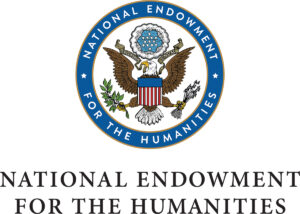There are no recent bookmarks.
Research and Development

Grant Snapshot
- Maximum award amount: Tier I provides awards up to $100,000, Tier II provides awards up to $350,000
- Funding Opportunity for: Organizations
- Period of performance: Tier I: one to two years, Tier II: one to three years
- Application available: February 29, 2024
- Optional draft due: April 9, 2024
- Deadline: May 21, 2024
- Expected notification date: December 31, 2024
- Project start date: March 1, 2025 - September 1, 2025
The Research and Development program supports projects that address major challenges in preserving or providing access to humanities collections and resources. These challenges include the need to find better ways to preserve materials of critical importance to the nation’s cultural heritage—from fragile artifacts and manuscripts to analog recordings and digital assets subject to technological obsolescence—and to develop advanced modes of organizing, searching, discovering, and using such materials.
This program supports projects at all stages of development, from early planning and stand-alone studies to advanced implementation. Research and Development projects contribute to the evolving and expanding body of knowledge for heritage practitioners, and for that reason, outcomes may take many forms. Projects may produce any combination of laboratory datasets, guidelines for standards, open access software tools, workflow and equipment specifications, widely used metadata schema, or other products.
Research and Development supports work on the entire range of humanities collection types including, but not limited to, moving image and sound recordings, archaeological artifacts, born digital and time-based media, rare books and manuscripts, archival records, material culture, and art.
Research and Development projects are encouraged to address one or more of the following areas of special interest:
- Furthering theory and practice in core heritage collections work
- Preserving audiovisual and digital heritage
- Applying artificial intelligence to collections-based activities
- Conserving the material past
- Protecting cultural heritage
- Stewarding collections by and with underrepresented communities
- Responding to the impact of climate change
What’s new for 2023-2024:
- The maximum funding amount for Tier I projects has been raised to $100,000 for a period of performance of up to two years. Tier I projects no longer have a white paper requirement.
- In addition to long-standing areas of interest, two new areas have been highlighted:
- Furthering theory and practice in core heritage collections work such as appraisal, arrangement, description, cataloging, knowledge organization, and digital curation.
- Applying artificial intelligence to collections-based activities by heritage institutions such as libraries, museums, and archives.
- For Tier II proposals the main narrative page limit has been reduced from 15 to 12 pages.
- We encourage projects aligning with NEH’s new special initiative, American Tapestry: Weaving Together Past, Present, and Future. American Tapestry supports projects that address one or more of the following themes: strengthening our democracy, advancing equity for all, and addressing our changing climate. Please note that Research and Development projects that do not address one of these themes are still eligible to apply.
Visit https://www.neh.gov/grants/preservation/research-and-development for more information.

